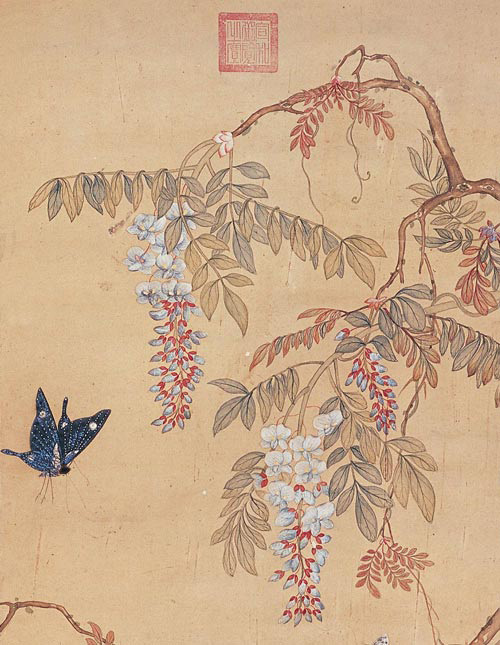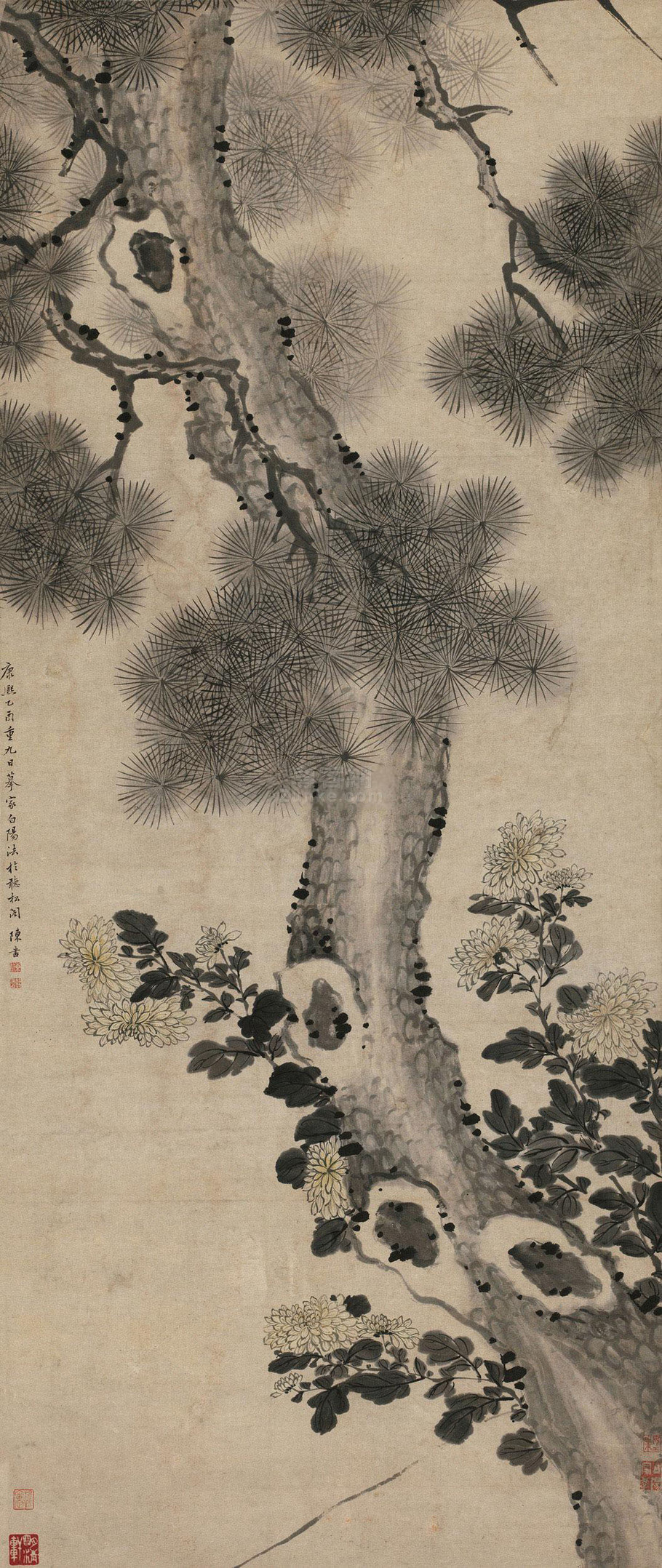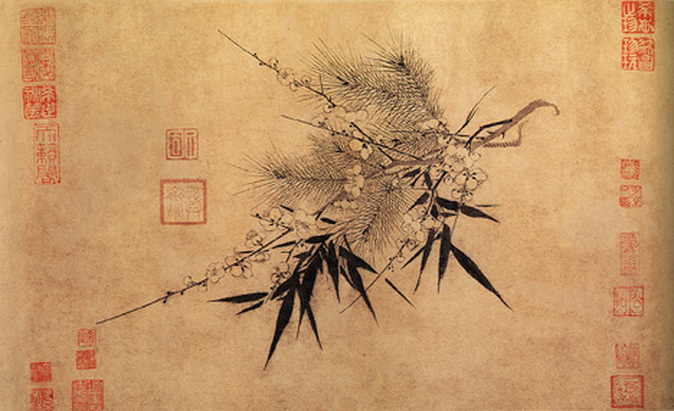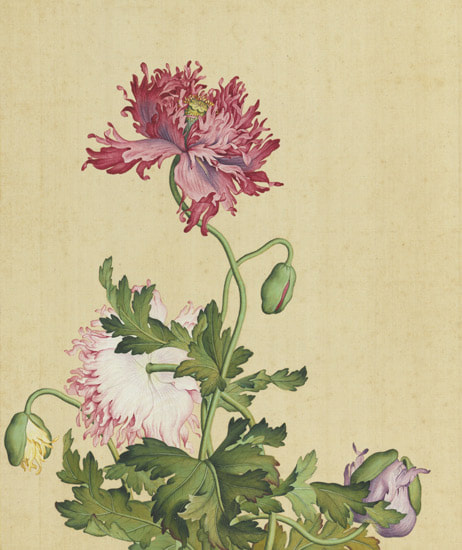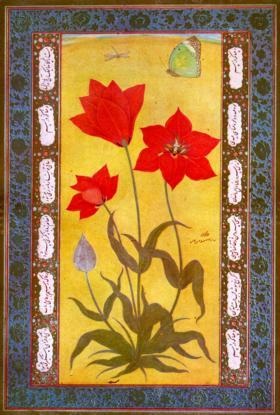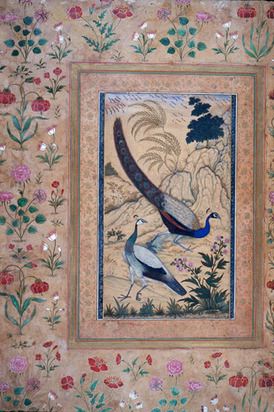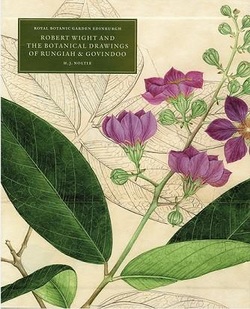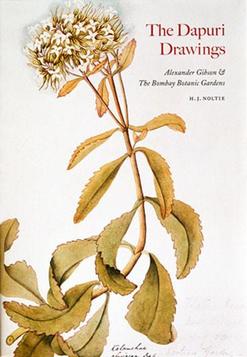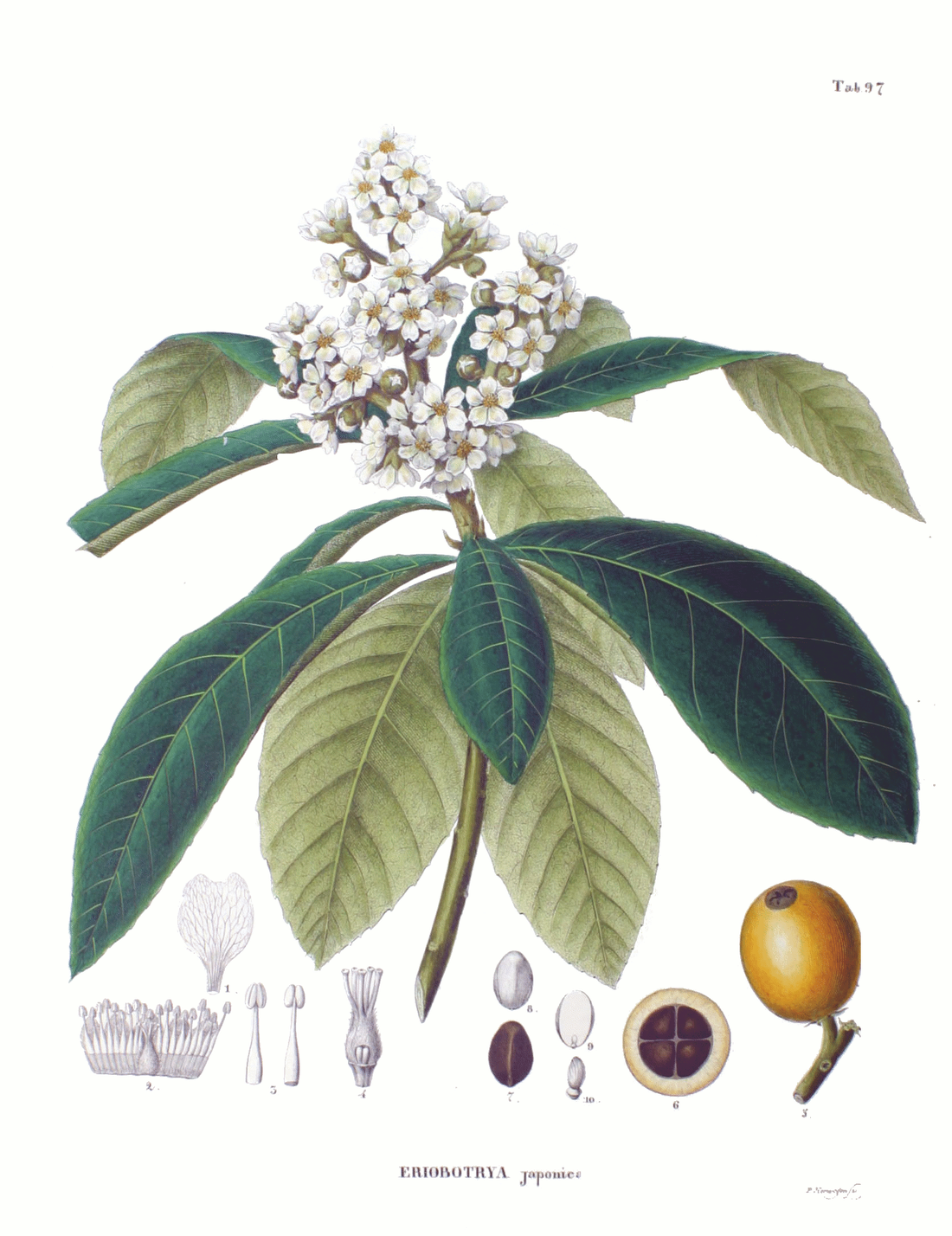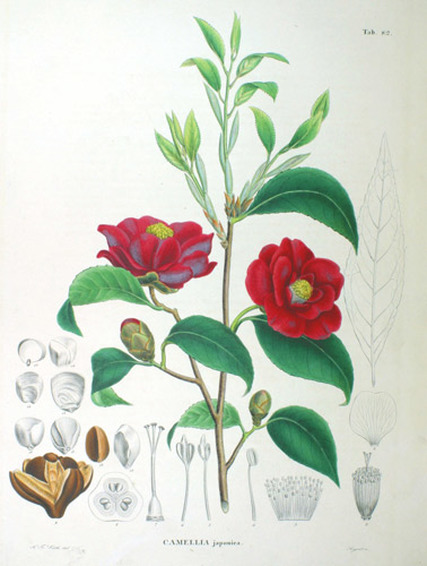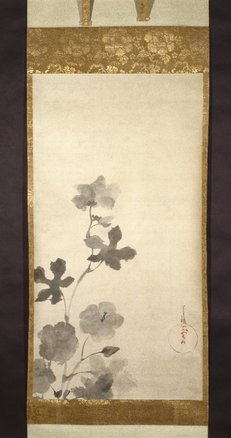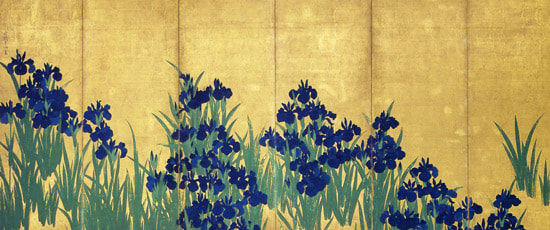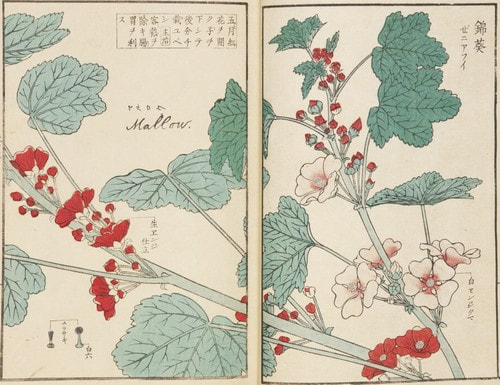- Home
- NEWS
-
HISTORY
- What is Botanical Art?
- What is Botanical Illustration?
- Botanical Art History Books >
- Herbals
- Florilegia and Flora
- Patrons of Botanical Art >
- Past Masters - Botanical Art and Illustration >
- Famous Asian Botanical Artists (600-1900)
- 20th & 21st Century Botanical Artists >
- Botanical Photographers
- Botanical and Herbal Art Online
-
ARTISTS
- Botanical Artists in the UK
- Botanical Artists in North America
- Botanical Artists in Europe
- Botanical Artists in Australia and New Zealand
- Botanical Artists in Asia
- Botanical Artists in Africa
- Botanical Artists in Latin America
- Botanical Printmakers, Photographers, Sculptors et al
- The Jill Smythies Award
- Botanical Artists on Facebook
- Botanical Art Blogs
-
Exhibitions
- Calls for Entries - OPEN exhibitions
- Online Exhibitions >
- RHS Botanical Art & Photography Shows >
- The Shirley Sherwood Gallery of Botanical Art >
- Hunt International Exhibition of Botanical Art & Illustration
-
UK
>
- North America >
- Europe >
- Australasia >
- Asia >
- Africa
- ARCHIVE: World Wide Exhibition of Botanical Art 2018
-
Education
- NEW BOOKS about Botanical Art and Illustration >
-
Best Botanical Art Instruction Books
>
- Tips and Techniques >
- Botanical Art Video Tips >
- Online Botanical Art Instruction >
- International Directory: Botanical Art Teachers
- International Directory of Botanical Art Courses >
- Artist Residencies, Scholarships and Bursaries
- Diplomas and Certificates >
- Distance Learning Courses
- Talks, Lectures & Tours
- Botanical Education on Facebook
- Materials
- Groups
-
Botany
- Why botany matters to artists
- Botany Books for artists >
- Scientific botanical illustration
- Plant Forms and Anatomy
- Plant Evolution and Taxonomy
- Plant Names and Botanical Latin
- Botanical Dictionaries
- How to Identify Plants
- Recording a Plant / Sketchbooks >
- Botanic Gardens & Herbaria >
- Blogs about Plants and Flowers
- Contact
Find out about the roots of botanical art in Asia - in China, India, Japan, Korea and Thailand
|
This page covers the development of botanical art in Asia between 600 and 1900 AD.
Below I have developed (and am developing) sections relating to the countries which have the strongest traditions of painting plants and flowers
|
...the Chinese or Japanese artist approaches the painting of flowers with a humility that is rarely encountered in the West Two recurrent names are already emerging. 'The East India Company' and 'Sir Joseph Banks' are associated with a lot of the discoveries of plants and the development of botanical illustration in the 19th century.
The image in the banner is a crop of the Plate of Cephalotaxus harringtonii from the Flora Japonica |
CHINA
...flower painting as in independent art, untainted by medical or other practical considerations, began in China as early as the seventh or eighth century AD and was carried on with enthusiasm through these centuries when, in the West, Nature was still an object of mistrust or even fear
Wilfrid Blunt (The Art of Botanical Illustration' - West and East)
Chinese flower painting
|
Flower painting (huahui) in China
Bird and flower painting also became recognised as an independent and specific genre of Chinese art. It was associated with the philosophy of Taoism which emphasises harmony with nature. Xu Xi (Hsü Hsi) is considered to be the founder of flower and bird painting. The genre was also introduced to Japan There are two approaches to painting flower and bird paintings:
|
Artists not only directly portrayed the outer beauty of flowers, they also expressed the subtle spirit and demeanor of their subject. The Four Gentlemen or Four Noble Plants - also known as the Flowers of the Four Seasons are
|
Chinese painting techniques
"To be without method is deplorable, but to depend entirely on method is worse."
(Lu Ch'ai (Wang Kai) 17th century Master of Chinese brush painting
Four basic painting techniques
These are:
These are:
- outlines (bones) filled with colors (雙鉤填彩) - The outline is regarded as the "bones" of a painting. Traditional Chinese realistic painting demonstrates meticulous attention to detail of the outline, fine line brushwork and use of colour in a symbolic way
- “boneless” washes (沒骨) - painting with outlines or previous sketches.
- “baimiao (白描)” ink lines - this technique involves an emphasis on painting outlines using fine lines of ink and a few light tonal washes of ink to indicate form. This technique never uses colour. Also called the "white lines" technique.
- “sketching ideas (寫意)” - the sketch painting technique uses freehand brushwork
Six principles of Chinese Painting
How paintings of flowers and plants were constructed was also influenced by the earliest record of Chinese art Theory - the six principles of chinese painting. This relates to the Gu Huapin Lu (“Classified Record of Painters of Former Times”) by Xie He (a.k.a. Hsieh Ho) published in the 6th century.
In this he rates 27 painters in three classes of descending merit, each with three subdivisions. He explains the criteria for the rating and ranking as the six principles.
How paintings of flowers and plants were constructed was also influenced by the earliest record of Chinese art Theory - the six principles of chinese painting. This relates to the Gu Huapin Lu (“Classified Record of Painters of Former Times”) by Xie He (a.k.a. Hsieh Ho) published in the 6th century.
In this he rates 27 painters in three classes of descending merit, each with three subdivisions. He explains the criteria for the rating and ranking as the six principles.
- "Spirit Resonance," or vitality, and seems to translate to the nervous energy transmitted from the artist into the work. The overall energy of a work of art. Xie He said that without Spirit Resonance, there was no need to look further.
- "Bone Method," or the way of using the brush. This refers not only to texture and brush stroke, but to the close link between handwriting and personality. In his day, the art of calligraphy was inseparable from painting.
- "Correspondence to the Object," or the depicting of form, which would include shape and line.
- "Suitability to Type," or the application of color, including layers, value and tone.
- "Division and Planning," or placing and arrangement, corresponding to composition, space and depth.
- "Transmission by Copying," or the copying of models, not only from life but also the works of antiquity.
- Six principles of Chinese painting
Chinese painters of plants and flowers
One of the problems with identifying artists is the different names attributed to them over time. Developing a list of important flower painters will take time!
|
T’ang Dynasty (618-906 AD)
Five Dynasties and Ten Kingdoms (907–960 AD)
Sung Dynasty (960-1279)
Chao Ch'ang lived in Szechuan and was famous for his paintings of flowering plants and cut branches, vegetables and fruits. He painted from observation and often refused to sell his paintings. Interestingly very few of his paintings have survived as a result. Wang Tingkuo from K'aifeng in Honan Province. He specialized in painting flowers and birds. His paintings are in light colors and possess an unusual degree of refinement. Zhao Mengjiang (1199-1267) He attained high rank as a Mandarin at court during the Song Dynasty. He was a master painter of ink plums, orchids, pines, bamboos and narcissi but painted them in ink and did not use colour to make them come alive. (see Narcissus - on the Met Museum Heilbronn Timeline of History Three Friends of Winter) |
Early Qing dynasty (1644-1912)
|
Quing Dynasty (1636 - 1912) also known as 'Lang Shining'
|
Giuseppe Castiglione (1688-1766) aka Lang Shining (郎世寧)
An Italian Jesuit lay brother and missionary to China, was also an artist who served the Imperial Court of three Emperors. At that time the missionaries typically introduced the (then) modern painting style to China. He painted in the style of both the Italians and the Chinese and worked at court for 50 years under the name of Qing Lang Shining. This painting of poppies is part of a collection of paintings known as "Xianyu Changchun" (Immortal Blossoms in an Everlasting Spring) which is now in the National Palace Museum. Castiglione's painting is on silk which requires excellent and extremely precise painting skills as no element once painted can be removed. REFERENCE
Because painting on silk does not allow for correction or overpainting, Castiglione worked out every detail in a preparatory drawing on paper before he traced the design onto silk. |
John Reeves (1774–1856)
Appointed as a tea inspector in 1808 and started to travel to China. He met with and was appointed by Sir Joseph Banks to be one of his many collectors. he was also He was also a keen amateur naturalist and artist and also collected drawings! The link provides a detailed explanation of how the collection came about.
Appointed as a tea inspector in 1808 and started to travel to China. He met with and was appointed by Sir Joseph Banks to be one of his many collectors. he was also He was also a keen amateur naturalist and artist and also collected drawings! The link provides a detailed explanation of how the collection came about.
The commissioned paintings were executed on thick, cream English watercolour paper, predominantly produced by Whatman and made from cotton rag, measuring at least 48 x 36cm.
The Plantsman
REFERENCE: BOOKS & ARTICLES
- John Reeves - Pioneering Collector of Chinese Plants and Botanical Art by Kate Bailey | ACC Art Books - issuu
- The Reeves Collection of Chinese Botanical Drawings | The Plantman December 2010 (PDF File) - Kate Bailey describes an outstanding collection of early 19th-century art held at the RHS Lindley Library. This large collection is bound into eight albums
- Science and Art in the Reeves Collection | The Plantsmasn June 2016 - Kate Bailey & Charlotte Brooks show how sophisticated analytical techniques have given new insights into the pigments and methods used by Chinese botanical artists in the early 19th century
|
Chinese Art and the Reeves Collection: Images of Nature
by Judith Magee The Natural History Museum has developed a book to show off prime images from the Reeves Collection of paints of the flora and fauna of China. These were sent back from China to the UK in the early 1800s and now form part of the Reeves Collection at the Natural History Museum in London |
Paperback: 112 pages
Publisher: The Natural History Museum Published First Edition: 1 Mar. 2011 Chinese Art and the Reeves Collection: Images of Nature
|
REFERENCE: CHINESE BOTANICAL ART
- Encyclopedia of China: History and Culture By Dorothy Perkins
- Wikimedia Commons - Bird and flower paintings of China
- Chinese brush painting
- Wikipedia - List of Chinese Painters
INDIA
Plants have always been important to the practice of Ayurvedic medicine which is one of the world’s oldest medicinal systems. However, unlike in the west, the practice of medicine does not seem to have triggered the development of botanical illustration to ensure plants are identified correctly.
“Depictions of plants abound in early Indian art: see carvings on temple walls, pottery designs, motifs on woven carpets and embroidered textiles, representations of the Buddha at Bodh Gaya, and illustrated folios from medieval manuscripts of Hindu epics among other things,”
Nachiket Chanchani, Associate Professor of South Asian Art and Visual Culture | University of Michigan.
Mughal Emperors and botanical illustration
There was no true botanical illustration until the time of the Mughal Emperors who were genuine nature lovers.
Mughal emperors commissioned botanical and ornithological studies from their court artists.
Mughal emperors commissioned botanical and ornithological studies from their court artists.
|
One of the most notable emperors was Jahangir (1569-1627) who was interested in painting serving his other interest in the scientific basis of nature.
|
His detailed careful depictions of plants and animals avoided all personal expression and are extremely valuable for their scientific accuracy as well as their artistic perfection. Ustad [Master] Mansur has become such a master in painting that he has the title of Nadiru-1-'asr [Wonder of the Age], and in the art of drawing is unique in his generation. |
"This year [A.D. 1620], in the little garden of the palace and on the roof of the chief mosque, the tulips blossomed luxuriantly. There are many blue jessamines in the gardens, and the white jessamines that the people of India call chambili are sweet-scented.... I saw several sorts of red roses: one is specially sweet-scented.... The flowers that are seen in the territories of Kashmir are beyond all calculation. Those that Nadir al-casr Ustad Mansur has painted are more than 100"
Jahangir, Tuzuk, II, p. 145
|
The depiction of formal flowering plants is synonymous with the reign of Shah Jahan (I628-57). The portrayal of plants is seen in the borders of paintings and albums and architectural decoration. Examples of the latter include the the carved stone and pietra dura work in buildings like the Taj Mahal and Red Forts in Delhi and Agra. They can also be seen in material for sashes, robes and metalwork and jade carving.
|
Colonial India and the East India Company
|
Recording plants in paintings seems to have been reinforced by Europeans resident in India who either wanted records of their time living in India or wanted practical records because of their job. So, for example, a number of physicians working for the East India Company were interested in botany and plants and wanted paintings of what they found.
Company School Paintings (18th and 19th centuries)
Many Indian artists worked for patrons in the East India Company. The term used for this body of artists is the Company style. Many had been trained in schools set up in major cities by the British to train Indian artists in Western Techniques. Company School artists typically worked in watercolour on paper and recorded whatever interested their patrons. The style in fact varied by the different centres/cities. They recorded all aspects of the land and culture. Some artists specialised in producing large paintings of the plants and flowers of India. Very few Company paintings of plants seem to have been digitised. However a number are regularly included in botanical art exhibitions at Kew. |
Company School paintings are in the collections of:
- the British Museum (Natural History) - which have been presumably transferred to the Natural History Museum
- the Linnean Society,
- The India Office Library
- Royal Botanic Gardens, Kew
An exhibition of paintings by Indian artists working under commission of officials of the East India Company has been borrowed from four British institutions: British Museum (Natural History),
Artists trained in the Mughal tradition adapted their skills for the purpose of recording, with the standard of accuracy demanded by European Scientists, the potential plant resources of a territory under British Influence. The paintings represent a confluence of styles of East and West. They are largely unknown and have certainly have never been shown in America
Bulletin of the Hunt Institute for Botanical Documentation | Carnegie Mellon University Fall 1979
Botanical Art from India: The Royal Botanic Garden Edinburgh Collection
by Henry J. Noltie
by Henry J. Noltie
|
This book is about the extensive collection of botanical art created in India which is now archived at the Royal Botanic Garden Edinburgh
This book tells the story of the collections made by those who studied the botany of India. Itis illustrated with 86 drawings that are both scientifically accurate and stunningly beautiful. Included are examples made in all three of the administrative units of British India, the Presidencies of Bengal, Bombay and Madras between 1770 and 1860. |
Hardcover: 128 pages
Publisher: Royal Botanic Garden Edinburgh Publication date: 1 Aug. 2017 Language: English ISBN-10: 1910877220 | ISBN-13: 978-1910877227 Product Dimensions: 34.3 x 2 x 24.1 cm BUY Botanical Art from India: The Royal Botanic Garden Edinburgh Collection
|
READ Review: Botanical Art from India: The Royal Botanic Garden Edinburgh Collection by Aline Dobbie India GB News
Company Painters
Teams of botanical artists were employed at the East India Company gardens of Calcutta and Saharanour.
Often we do not know the names of the artists. Collections of paintings by Company School artists are often known by the name of the collector. However certain patrons employed the same artists and we know their names.
Often we do not know the names of the artists. Collections of paintings by Company School artists are often known by the name of the collector. However certain patrons employed the same artists and we know their names.
Bhawani Das
One of three artists employed by Mary Impey - wife of Elijah Impey, the first Chief Justice of the Supreme Court, Fort William - who commissioned over three hundred paintings.
Rungiah and Govindoo (mid 19th century)
These two Indian artists were commissioned to make several thousand botanical drawings by Robert Wight (1796-1872) a surgeon with the East India Company. Some 700 of these can be found in the collections of the Royal Botanical Garden Edinburgh (RGBE)
One of three artists employed by Mary Impey - wife of Elijah Impey, the first Chief Justice of the Supreme Court, Fort William - who commissioned over three hundred paintings.
Rungiah and Govindoo (mid 19th century)
These two Indian artists were commissioned to make several thousand botanical drawings by Robert Wight (1796-1872) a surgeon with the East India Company. Some 700 of these can be found in the collections of the Royal Botanical Garden Edinburgh (RGBE)
Robert Wight and the Botanical Drawings of Rungiah and Govindoo
by Henry J. Noltie
by Henry J. Noltie
A trilogy of volumes in a slipcase is the second in a series of illustrated works devoted to collections of botanical drawings made by Indian artists for Scottish surgeon-botanists, held in the library of the Royal Botanic Garden Edinburgh.
|
Paperback: 528 pages
Publisher: Royal Botanic Garden Edinburgh Publication Date: 1 May 2007 Language: English ISBN-10: 1906129029 ISBN-13: 978-1906129026 Dimensions: 29.6 x 23.4 x 6.2 cm BUY Robert Wight and the Botanical Drawings of Rungiah and Govindoo 2007
|
Collections of Indian Botanical Art
The Cleghorn Collection (RBGE)
Several thousand botanical drawings were commissioned in India, from Indian artists, by Hugh Cleghorn (1820-1895).
The Roxburgh Icones (RBGE)
William Roxburgh (1751-1815) was known as the ‘Father of Indian Botany’. In India he commissioned about 2500 drawings of Indian plants from a team of Indian artists. These are known as the ‘Roxburgh Icones’. RGBE have a a set of about 500 extremely fine, partially coloured, ink copies based on the original Roxburgh Icones, made in the Calcutta Botanic Garden 1815-20. The names of the botanical artists employed by Roxburgh are not known.
Several thousand botanical drawings were commissioned in India, from Indian artists, by Hugh Cleghorn (1820-1895).
The Roxburgh Icones (RBGE)
William Roxburgh (1751-1815) was known as the ‘Father of Indian Botany’. In India he commissioned about 2500 drawings of Indian plants from a team of Indian artists. These are known as the ‘Roxburgh Icones’. RGBE have a a set of about 500 extremely fine, partially coloured, ink copies based on the original Roxburgh Icones, made in the Calcutta Botanic Garden 1815-20. The names of the botanical artists employed by Roxburgh are not known.
The Cleghorn Collection: South Indian Botanical Drawings 1845 to 1860
from the Royal Botanic Garden Edinburgh
by Henry J. Noltie
from the Royal Botanic Garden Edinburgh
by Henry J. Noltie
|
By far the most important element of the Illustrations Collection at RBGE is the group of 3,000 botanical drawings commissioned in India, from Indian artists, by Hugh Cleghorn (1820-1895) during his 25 years as an East India Company surgeon and pioneering forester
In this book, more than 200 of the drawings from the Cleghorn Collection are reproduced, in colour, for the first time. These include drawings from nature, copies based on European prints, and Nature Prints made from herbarium specimens. They are the work of several South Indian artists and of pupils of the pioneering Madras School of Art. |
Hardcover: 172 pages
Publisher: Royal Botanic Garden Edinburgh Publication date: 5 Aug. 2016 ISBN-10: 1910877115 ISBN-13: 978-1910877111 Dimensions: 32.8 x 23.2 x 2.4 cm BUY The Cleghorn Collection: South Indian Botanical Drawings 1845 to 1860
|
Exhibitions of Indian Botanical Art
The Royal Botanic Garden in Edinburgh has held a series of major exhibitions of botanical drawings and paintings of Company School paintings and drawings in the RBGE gallery at Inverleith House:
- Indian Botanical Drawings 1790–1859 (1998),
- The Dapuri Drawings (2002),
- Rungiah & Govindoo: South Indian Botanical Drawings 1826–1853 (2006)
- Raffles’ Ark Redrawn: Natural History Drawings from the Collection of Sir Thomas Stamford Raffles (2009),
- Forests and Gardens of South India: Botanical Drawings Commissioned by H.F.C. Cleghorn (2010).
Dapuri Drawings: Alexander Gibson & the Bombay Botanic Gardens
by Henry J. Noltie
A book about the watercolour paintings of plants grown in the botanic gardens in Bombay in the middle of the 19th century. These were commissioned by Alexander Gibson, an East India Company surgeon. Gibson wrote the Bombay Flora with Nicholas Dalzell.
by Henry J. Noltie
A book about the watercolour paintings of plants grown in the botanic gardens in Bombay in the middle of the 19th century. These were commissioned by Alexander Gibson, an East India Company surgeon. Gibson wrote the Bombay Flora with Nicholas Dalzell.
|
An unknown Portugese-Indian artist created the watercolour paintings which were made between 1847 and 1850. The plants are not all native to Bombay and western India. Half are exotics from as far afield as Argentina and Australia.
The book includes information about Gibson's life and work (including his role as a pioneering forest conservator) and a history of Dapuri and Gibson's other botanic gardens. |
Hardback, 240pp, 340 x 240mm, full colour illustrations throughout
|
|
MUSEUM REFERENCES:
|
REFERENCES - ARTICLES:
ARTWORK ONLINE
|
JAPAN
|
Traditional Japanese botanical paintings of flowers and plants takes a number of forms.
Japanese painting began to be influenced by western art in the latter part of the 19th century. Below I'm developing a list of people who are important to the story of the development of Japanese Botanical Art. |
REFERENCE:
|
Physicians and explorers
The Japanese Flora was first described - in part - by:
- German physician Engelbert Kaempfer
- Swedish naturalist and doctor Carl Peter Thunberg. Thunberg also introduced the Linnean system for classifying plants to Japan.
|
Philipp Franz von Siebold (1796–1866)
He is renowned for introducing western medicine to Japan and for bringing Japanese plants to the west - along with scientific records which include botanical drawings. Siebold was a German physician who joined the Dutch East Indian Army as medical officer. He worked as a doctor in Japan between 1823–1829 and uniquely was not constrained as to his movements. He was interested in plants and the extent to which the Linnean system covered the plants he found in Japan. His achievements include:
Most of his collections can be found in SieboldHuis the museum dedicated to him in Leiden where he lived after his return.
|
Japanese flower painters
|
Tawaraya Sōtatsu (16th/17th century)
Characterised by the Smithsonian as "one of the most influential yet elusive figures in the history of Japanese visual culture". Active in Kyōto from approximately 1600 to the 1630s. Works attributed to him or his studio in the Metropolitan Museum of Art Kitagawa Sōsetsu (active 1639–50) Poppies - Hanging scroll; color and gold on paper |
|
Ogata Kōrin (1658 – June 2, 1716) was a Japanese artist of the Tokugawa period (1603–1868), lacquerer and designer. He was regarded as one of the masters of the Sōtatsu-Kōetsu school of decorative painting.The Rinpa style involved simple natural subjects such as birds, plants and flowers, with the background filled in with gold leaf. Korin created screens on which he painted various motifs - some of which were botanical in nature. His screens with blue iris (c.1709) s regarded as one of his masterpieces and is very well known.
Reference: |
|
Kawahara Keiga 1786 - 1860
c. 1811 he was appointed as a painter for the Dejima Factory. This was on the island where all non-Japanese where segregated so they did not pollute Japanese culture. He painted things Japanese in response to requests from Blomhoff (director of the Dutch East India Company Dejima Factory), Fisscher (a Dutch East Indian Company employee), and Siebold (a physician at the Dutch East India Company Dejima Factory). In a way he was a 'Company Painter'. He was taught the principles of western painting techniques in order to do botanical paintings and then introduced these to other Japanese artists. He published 76 of his original drawings as Keiga Shasin so (1836). Reference: |
Exhibitions
- Hunt Institute: Talking in Flowers: Japanese Botanical Art 5 April – 16 July 1982 - Included examples of brush painting and woodblock printing. A catalogue accompanied the exhibition.
KOREA
In development
THAILAND
In development
A page in progress
|
|
More Famous Botanical Artists of the Past
- Past Masters of Botanical Art and Illustration - European artists 1500 - 1900
- 20th Century Botanical Artists (now deceased)
- Landmark Publications - Herbals
- Landmark publications - Florilegium
- Books about the history of botanical art
- Online galleries of collections of historical botanical and herbal art
- Botanical Photographers
Resources about Botanical Art and For Botanical Artists
ABOUT: About the Author | Contact | Testimonials | Privacy Policy COPYRIGHT 2015-22: Katherine Tyrrell all rights reserved.
|
NEWS
News Blog about artists, awards, exhibitions etc. |
EXHIBITIONS
- Calls for Entries - Exhibitions around the world - Online Exhibitions - RHS Exhibitions - Hunt Exhibitions ORGANISATIONS
- Botanical Art Societies - national / regional / local - Florilegium & Groups - Botanical Art Groups on Facebook |
EDUCATION
- Tips and Techniques - Best Botanical Art Instruction Books - Directory of Teachers - Directory of Courses - Online Botanical Art Courses - Diplomas and Certificates - Talks, Lectures and Tours ART MATERIALS (Paper / Vellum) BOTANY FOR ARTISTS - Scientific Botanical Illustration - Best Botany Books for Artists - Plant Names & Botanical Latin BOTANIC GARDENS & Herbaria |
FEEDBACK
Please send me . - news to share - info. about exhibitions - any suggestions for what you'd like to see on this website ADVERTISE Contact me if you'd like to promote workshops and courses on this site. AFFILIATION This website is free to you but not for me! (See Affiliate Income below) |
|
Cookies, Personal Data & Privacy tells you how this site relates to and impacts on you and your privacy - and your choices.
Product & company names may be trademarks of their respective owners |
About Affiliate Income: This website has been created to share information not to make a profit. I am an Amazon Associate and earn from qualifying purchases (e.g. books from Amazon) which helps offset costs associated with maintaining this very large website.
|
- Home
- NEWS
-
HISTORY
- What is Botanical Art?
- What is Botanical Illustration?
- Botanical Art History Books >
- Herbals
- Florilegia and Flora
- Patrons of Botanical Art >
- Past Masters - Botanical Art and Illustration >
- Famous Asian Botanical Artists (600-1900)
- 20th & 21st Century Botanical Artists >
- Botanical Photographers
- Botanical and Herbal Art Online
-
ARTISTS
- Botanical Artists in the UK
- Botanical Artists in North America
- Botanical Artists in Europe
- Botanical Artists in Australia and New Zealand
- Botanical Artists in Asia
- Botanical Artists in Africa
- Botanical Artists in Latin America
- Botanical Printmakers, Photographers, Sculptors et al
- The Jill Smythies Award
- Botanical Artists on Facebook
- Botanical Art Blogs
-
Exhibitions
- Calls for Entries - OPEN exhibitions
- Online Exhibitions >
- RHS Botanical Art & Photography Shows >
- The Shirley Sherwood Gallery of Botanical Art >
- Hunt International Exhibition of Botanical Art & Illustration
-
UK
>
- North America >
- Europe >
- Australasia >
- Asia >
- Africa
- ARCHIVE: World Wide Exhibition of Botanical Art 2018
-
Education
- NEW BOOKS about Botanical Art and Illustration >
-
Best Botanical Art Instruction Books
>
- Tips and Techniques >
- Botanical Art Video Tips >
- Online Botanical Art Instruction >
- International Directory: Botanical Art Teachers
- International Directory of Botanical Art Courses >
- Artist Residencies, Scholarships and Bursaries
- Diplomas and Certificates >
- Distance Learning Courses
- Talks, Lectures & Tours
- Botanical Education on Facebook
- Materials
- Groups
-
Botany
- Why botany matters to artists
- Botany Books for artists >
- Scientific botanical illustration
- Plant Forms and Anatomy
- Plant Evolution and Taxonomy
- Plant Names and Botanical Latin
- Botanical Dictionaries
- How to Identify Plants
- Recording a Plant / Sketchbooks >
- Botanic Gardens & Herbaria >
- Blogs about Plants and Flowers
- Contact
